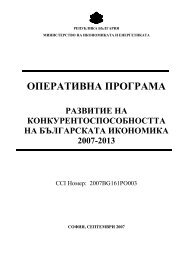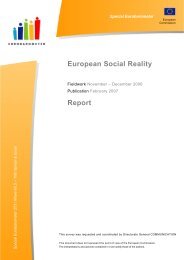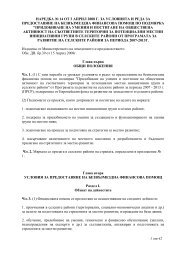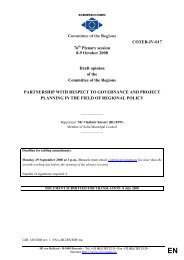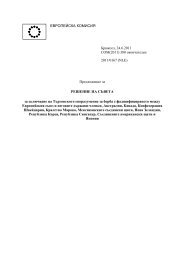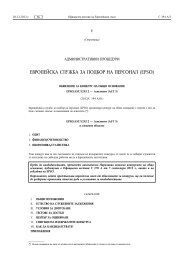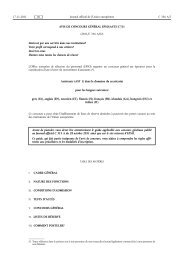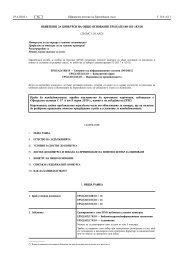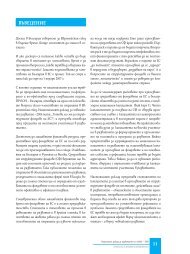National Strategic Reference Framework
National Strategic Reference Framework
National Strategic Reference Framework
Create successful ePaper yourself
Turn your PDF publications into a flip-book with our unique Google optimized e-Paper software.
MALTA – <strong>National</strong> <strong>Strategic</strong> <strong>Reference</strong> <strong>Framework</strong> 2007-2013 Draft Document for Consultation<br />
further investments in support infrastructures are required to assist enterprises in dealing<br />
with such challenges.<br />
Manufacturing industry in Malta has been changing with the emphasis shifting from the<br />
traditional low cost manufacturing towards higher value added activities. Cases in point<br />
are the contraction of the textile sub-sector and the emergence of generics manufacturing<br />
activities in the pharmaceutical sub-sector, in which operators’ competitive advantage<br />
lies in value added.<br />
Table 2.5<br />
Manufacturing Industry<br />
2000 2001 2002 2003 2004 2005<br />
Output (Lm ' 000) 1,314,596 1,086,776 1,078,156 1,105,179 1,085,847 1,037,373<br />
Output Growth (%) -17.3 -0.8 2.5 -1.7 -4.5<br />
Gross Value Added (Lm ' 000) 345,828 299,799 307,062 313,150 282,169 284,784<br />
Gross Value Added (%) -13.3 2.4 2.0 -9.9 0.9<br />
Source: <strong>National</strong> Statistics Office<br />
As highlighted in Table 2.5, aggregate nominal output from manufacturing activity has<br />
decreased by approximately 21 per cent from Lm1,315 million in 2000 to Lm1,037<br />
million in 2005. However, the decline registered in 2005 is mainly attributable to the<br />
difficult and subdued environment of the semi-conductor international business, which<br />
constitutes a large share in total manufacturing, and offset positive results registered in<br />
other sub-sectors. The sector’s gross value added decreased from Lm345 million in 2000<br />
to Lm300 million in 2001, increasing subsequently in 2002 and 2003, but contracted<br />
again to Lm282 million during 2004. During 2005, gross value added in the<br />
manufacturing industry increased marginally by 0.9 per cent to Lm285 million. In line<br />
with these developments, manufacturing employment followed a downward trend over<br />
the past years. Manufacturing employment declined from 25,126 at the end of October<br />
2004 to 24,605 at the end of October 2005. Job losses were mainly concentrated in the<br />
manufacturing of textiles and textile product and manufacturing of transport equipment.<br />
Tourism 8 contributes significantly to Malta’s economic growth, employment creation and<br />
foreign exchange earnings. During recent years, the local tourism industry has been<br />
significantly affected by the adverse geopolitical situation that characterised the<br />
international environment, as well as the economic situation in a number of major tourist<br />
markets. The Maltese tourism industry is also facing increased international competition,<br />
both from traditional as well as from new emerging tourist destinations. Largely as a<br />
result of international developments, the tourism sector in Malta has declined from a level<br />
8 The analysis of tourism in this section is starting from 2001, as data for tourist departures is only available<br />
from this year due to a change in tourism statistics data collection system.



